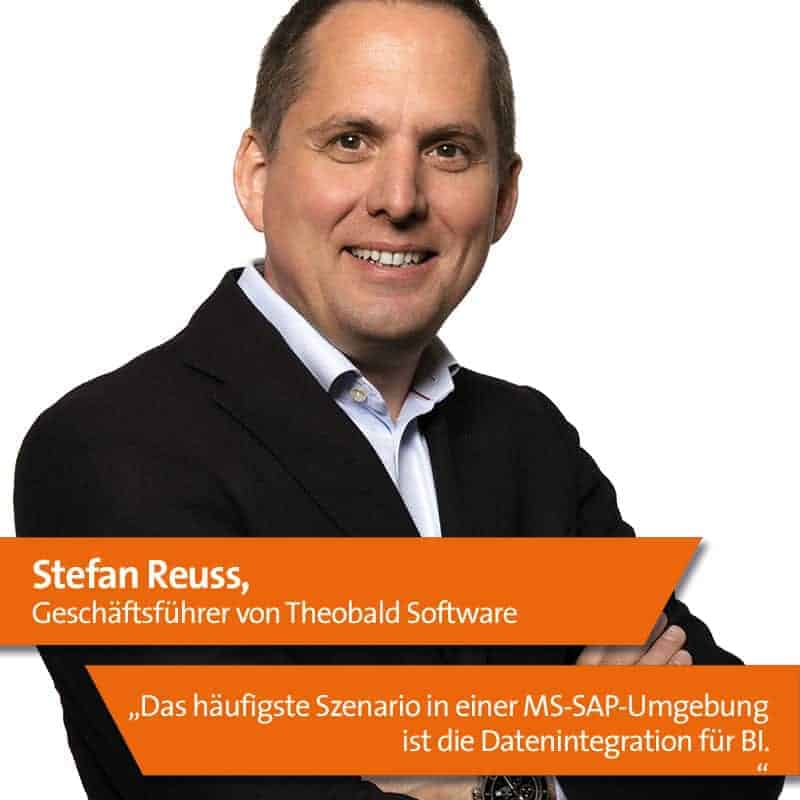Best of Breed - Cloud Orchestration


To what extent is a distinction made between on-premise and cloud computing when it comes to integration?
Patrick Theobald: From the business side, there is no difference. It's just a purely technical problem. And that, in turn, is demanding. First and foremost, it's about security.
A typical scenario is an SAP system running on-prem while the application (e.g. Nintex Workflow Cloud or Office 365) runs in the cloud.
Of course, access has to be bombproof, because all of a sudden a cloud-based application is reaching directly into the heart of the company from outside the firewall. That requires expertise.
The same applies to the user context. Of course, it must be ensured that the cloud user has the same rights as in the on-prem system. For example, anyone who is only allowed to see the figures of a specific plant in SAP should of course also only be allowed to see precisely these figures in the cloud.
This is referred to as impersonification of access. It is not technically trivial to map cloud-based user management to the user management of an SAP system whose roots go back to the 1980s.
 And is there cloud-cloud integration, because probably SAP on Azure doesn't want to be a solo concert either?
And is there cloud-cloud integration, because probably SAP on Azure doesn't want to be a solo concert either?
Theobald: The constellation SAP on-prem integrated with cloud applications is the most challenging. When everything takes place in the cloud, it becomes technically rather easier again, as the on-prem/cloud boundary is the biggest hurdle.
SAP on Azure with other Microsoft services such as O365 can rather be classified as technically simple.
Which further cloud orchestration against the (on-premise) solo concert is currently of strategic importance in the SAP community?
Stefan Reuss: In general, the scenario most requested by customers is that for data analysis. The transaction data is extracted from SAP (whether SAP on-prem or SAP on Azure) and then stored in an analysis platform.
This can either be a classic Azure-based SQL Server, Power BI, a Hadoop cluster or other non-Microsoft analytics platforms such as Amazon Redshift or Board.
Besides this analysis scenario, the connection of cloud-based workflows is the second most common use case - i.e. integration with Nintex Cloud, Microsoft Flow or Salesforce.
What are the most common business and organizational aspects of integration and orchestration for an existing SAP customer?
Peter Wohlfarth: The biggest stumbling blocks are security and stability. When it comes to security, the main issue is that two different user and rights administrations usually have to be reconciled.
And without destroying the user experience. The user would prefer not to know which system he is currently working with, as long as it functions reliably and, above all, with high performance. The second aspect is stability.
The more systems are involved, the greater the risk that a single system failure will bring down the chain. This must be consistently prevented in the design and with the right technology. The connection of cloud and on-prem systems can intensify this challenge even further.
What are the most common integration projects in a Microsoft SAP environment and why?
Reuss: The most common scenario is data integration for BI. The transaction data comes from SAP and is prepared for analysis in a non-SAP environment.
Why do customers want this? The question can be very complex, but three important aspects crystallize: First, users want to mix the data with non-SAP data, and that works particularly badly directly in SAP.
The second aspect is performance. Even with Hana, not all performance problems are solved. Many external analytics systems offer much better ratios between performance and cost.
The third aspect is agility. Especially in times of digitalization, customers are particularly keen to align their data flows so that they can be changed quickly and adapted to new requirements.
Traditionally and historically, processes and data flows in SAP or SAP BW are relatively rigid and resist adjustments as best they can.
What are other SAP integration projects outside the Microsoft environment at Theobald Software?
Reuss: The reasons from above can be transferred to other providers. Not only Microsoft offers very good data analysis platforms. One can also realize such applications with the technology of Oracle, Amazon, HP, Board and many other providers.
The same applies to workflow-type applications such as Nintex, Salesforce or K2. The USP of excellent connectivity to SAP can be transferred to a number of areas. This is what we have specialized in.







